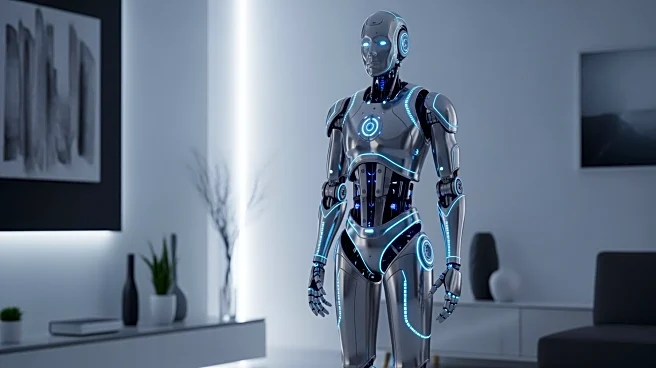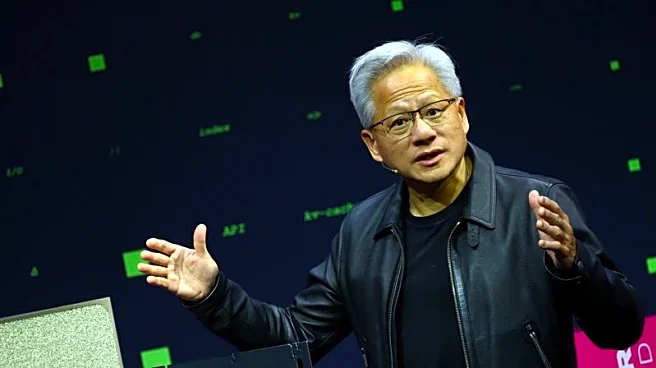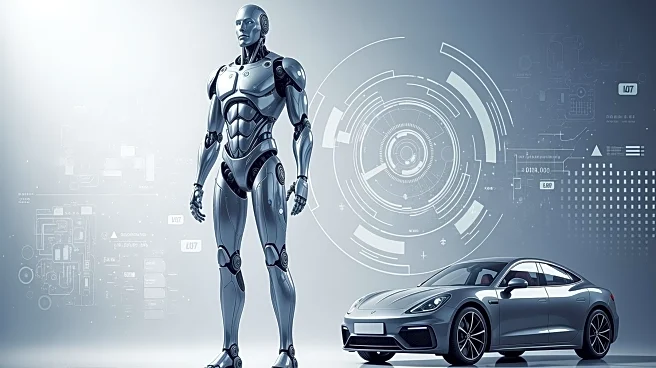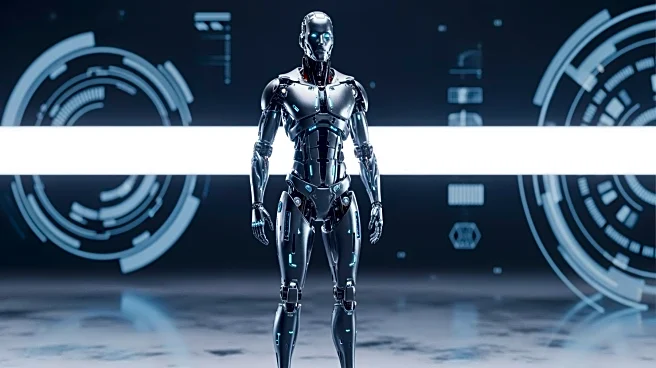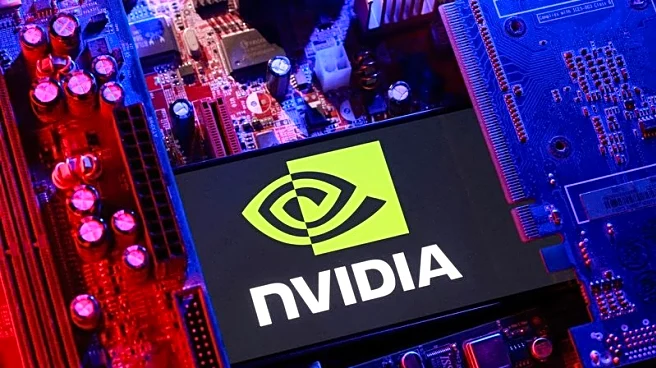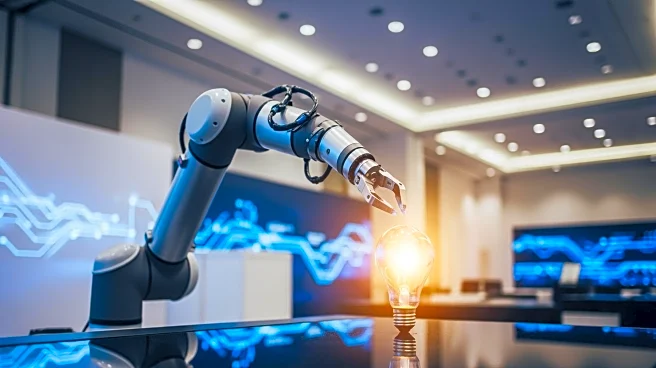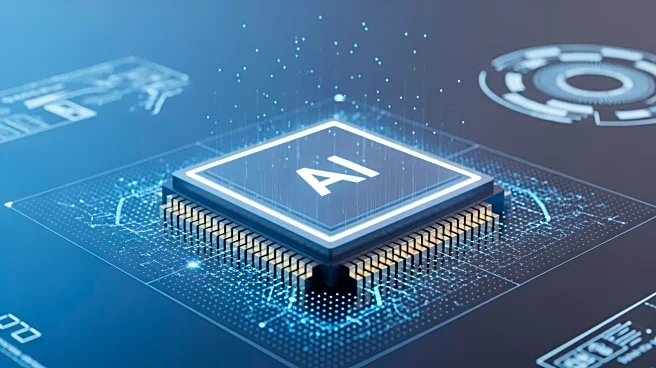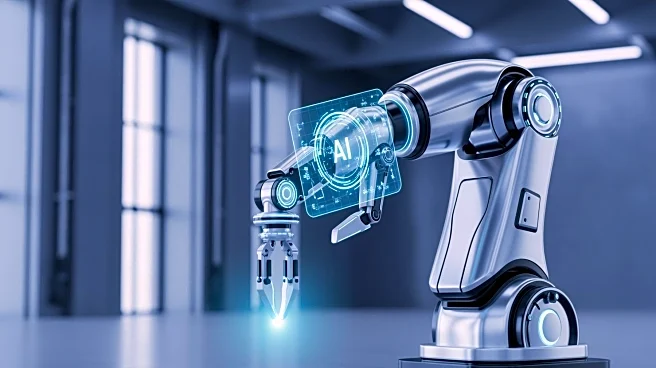What's Happening?
XPENG's next-generation humanoid robot, Iron, was showcased at a recent event in China, where its realistic movements led many to believe it was a human in disguise. To dispel these doubts, XPENG CEO He
Xiaopeng had the robot's leg skin cut open in front of a live audience, revealing its mechanical components. The demonstration aimed to prove the robot's authenticity, following past incidents where humanoid robots were revealed to be humans in bodysuits. After the demonstration, Iron walked off the stage, further affirming its robotic nature.
Why It's Important?
The demonstration of XPENG's Iron robot highlights the advancements in humanoid robotics, particularly in achieving lifelike movements that challenge perceptions of what is human versus machine. This event underscores the potential for humanoid robots to play significant roles in various sectors, from entertainment to service industries, where realistic interactions are crucial. As robots become more human-like, ethical considerations around their use and the potential for deception will become increasingly important. The ability to convincingly mimic human behavior could lead to new applications and challenges in robotics and AI.
What's Next?
XPENG's demonstration may prompt further developments in humanoid robotics, focusing on enhancing realism and functionality. As the technology progresses, there will likely be discussions around the ethical implications of humanoid robots, including their impact on employment and social interactions. Companies may explore new markets and applications for these robots, leveraging their lifelike qualities to enhance user experiences. Regulatory frameworks may need to evolve to address the unique challenges posed by humanoid robots, ensuring their responsible and ethical deployment.
Beyond the Headlines
The event raises questions about the future of human-robot interactions and the cultural implications of increasingly lifelike robots. As robots become more integrated into daily life, society will need to navigate the boundaries between human and machine, considering issues of identity, privacy, and trust. The demonstration also highlights the importance of transparency in robotics, as proving authenticity becomes crucial in maintaining public confidence in the technology.



